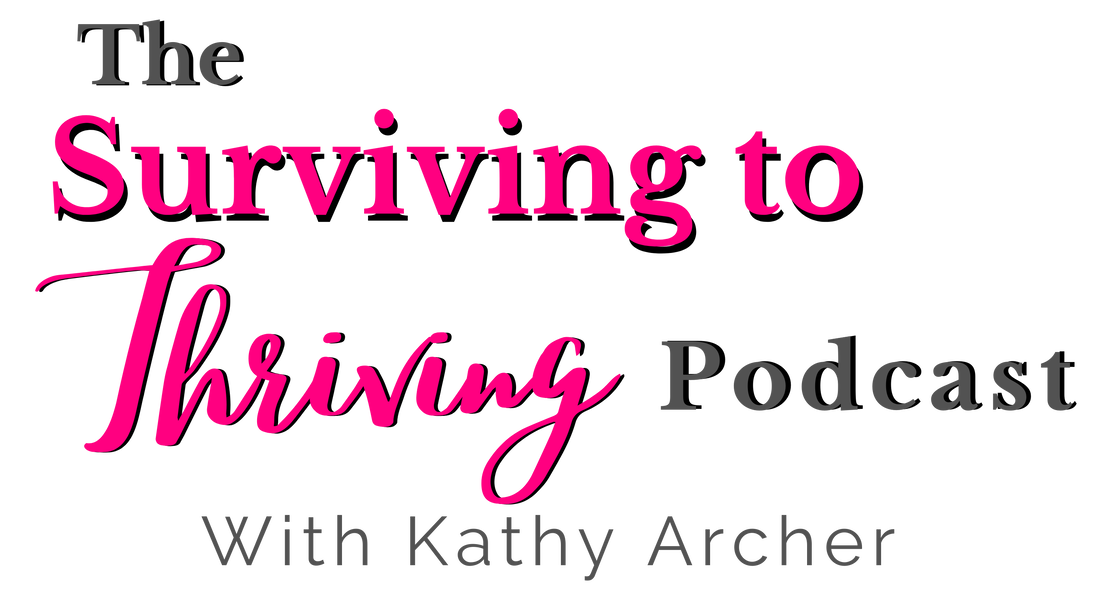|
Are you tired of employees that don’t seem to care? Apathy on your team shows up as indifference, laziness and sluggish behavior. Apathetic employees are simply going through the motions, looking for a pay cheque. If you are looking for the magic trick to transform this behavior, read on! I've been known to seem as though I don't care I caught my mind wandering earlier today when my son stopped in to talk to me. I was thinking of the things I had yet to do instead of listening to him. In fact I completely missed at least 2-3 sentences of what he was saying. When I realized this, I pulled myself back to the present conversation. (i.e. I practiced mindfulness) I looked at him, leaned in and focused on his excitement about his first time moving into a place on his own. When I took the time to focus and look at him, I could feel him get more excited and animate in his story. He felt heard. Perhaps you've been on the receiving end, feeling as though you don't matter You’ve probably been in the experience of my son, more times than you care to remember. You have been talking to someone and you know full well they are only partly there. It feels as if you are competing with some voice in their head that obviously only they can hear. When I’ve been in this situation, it feels as if the person “listening” doesn’t really care. You might just be as guilty as I am ... on a regular basis The truth in is leadership we do this to our employees constantly. In fact, we don’t even realize we do it. We talk to them about their work, their growth and the clients challenges, with only a small percentage of our consciousness on them. We are in fact apathetic towards employees. It appears as though we don't care! Our own apathy makes employees feel insignificant and that their work irrelevant. Ouch! I bet that isn’t the impact you want to have! Here is the trick to changing their apathy - Look into their eyes To change this impact, the one magic trick is to establish and maintain eye contact. When you look into someone’s eyes, you establish a level of connection that portrays connection, compassion and trust. These are vital traits for effective leadership.
Eye-contact is critical to developing passion for the work By establishing and maintaining eye contact with your staff you create deeper more meaningful relationships. Employee's care and concern for the work they do grows as you demonstrate care and concern for them. The organizational culture will shift from apathy to passionate work! QUESTION: Try increased eye contact in one conversation with an employee this week. What difference did it make in the engagement of that employee?
0 Comments
Does your mouth go dry when you get asked a question at a meeting? Your stomach tightens as you fumble over your words. Then you mumble something incoherently about something praying it made sense. Finally, you are ever so grateful when the attention turns to someone else. There is a lingering annoyance with yourself that you can’t quite get it together when it counts. You berate yourself because others sound confident, self- assure and composed when they talk, why can’t you? You are not alone! Women Leaders lack confidence In my coaching calls, women leaders are constantly telling me they are afraid to express themselves. They are anxious and uncomfortable in front of more senior team members. These women doubt their words, messages, and their decisions. They are worried to step outside of their comfort zone and try new things fearing they will look stupid, incompetent or silly. And sadly, they are not incredibly happy with themselves or their lives either. Fear holds women leaders back. The women I talk to are stuck. They are frustrated where they are at, but they lack the courage to step into new places, to bring forth new ideas and to be fully their best selves. As such, these women don't utilize their full potential nor get the impact they desire. I help women increase their courage As I work with women, I help them to see themselves as individuals. They start to get to know themselves better. As I encourage them to learn more and grow more, I also nudge them to try new things. OK, I often challenge them to do something they've been resisting or avoiding. They wouldn't do it with just a little nudge! Sometimes the new things women try are in their personal lives. Women begin to write, paint, exercise, set clearer boundaries, asks for help or go out with friends more often. Other times women expand outside their work comfort zone. They practice being more decisive in their decision-making. Women leaders in my programs present new ideas and new ways of doing things to their teams. For example, one woman introduced mindful practices to staff meetings, and another developed a new supervision practice for her meetings with her subordinates. It's time to grow your courage, increase your confidence and become more self-assured. As they grow courage, their best selves emerge Each time a woman stretches herself, I see her stand a little taller. I sense her inner confidence growing. I notice more enjoyment in their day and fulfillment in their lives. They share story after story of feeling more authentic and real in their leadership. It’s a powerful experience for them. Are you looking to grow your courage? If you’ve read this far, I suspect it’s because you are looking for that magic pill. I bet you want to feel more confident in your work and yourself. You are like most women, me included! We want to feel good about the work we do and that we are contributing fully and providing value to the work at hand. It's time to stop avoiding "scary" situations Many women I know are tired of shrinking every time the spotlight shines their way. The old “avoid eye contact” strategy only goes so far. You can't keep running to the washroom when it comes time to give opinions or look for volunteers. It's time to do some uncomfortable things. Start by trying new things outside your comfort zone There is no magic pill nor is it difficult or impossible to grow your courage. It starts with trying new things outside of what you normally do. When you try new things, you are stretching. You then get more comfortable doing those things and thus your comfort zone widens. When you get comfy with the new things, it means you are ready to stretch and try more. The more you do, the more you can do. You've done this already lots in your life Think back to when you first started driving. You were nervous. Your movements were choppy, and the person beside you was not feeling all that safe and confident in your skills. But the more you drove, the more comfortable you got. Driving day after day, longer trips and more frequently, your skills and confidence as a driver increased. Now, you likely don’t think about your every move while driving. You just do it. It is the same with other new things. Did you learn to ski some time ago or play golf? How about putting on your makeup? I am sure you don’t do it the same now as when you were a teenage girl. Your confidence has grown. You did something new. Practiced it. Got better at it and then your self-confidence grew.
It's time to grow your courage and your leadership! Increasing your courage will increase your happiness By stretching outside of your comfort zone, you will increase your confidence and become more courageous. By becoming a more courageous woman leader, you will both lead more powerfully and have a stronger impact. Maybe even more than that, you will feel so much happier and fulfilled! Question: What will you commit to doing to grow your courage today? Do you ever wonder if anyone listens to you? We’ve all had meetings that we have led where behaviors of employees after the meeting, clearly indicates those in attendance weren’t paying attention. It is extremely frustrating. If feels like a total waste of time. Consider this though, maybe they were listening, in fact, very closely. Perhaps they just somehow misunderstood your intentions. Relax. It isn't that you have done something wrong, I simply want to suggest that you missed one very important step. It is your step, actually, your footprint. See here is the thing, you left a mark on your employees as a result of what you said and how you said it during the meeting. You left an imprint on your team. The problem is, it probably wasn't the impact you desired. Follow along with me to find out how you can add one step so that you get the results you desire. I bet your irritation grows when employees disregard instructions you give The other day I was listening to a leader grumble to me that her employees don’t listen. The leader was discouraged by the indifferent attitude that employees had to her instructions given during a meeting. It was as if those in attendance hadn't even paid attention to what was going on. In the days following the meeting, errors were made, messages were mixed up and many people were increasingly annoyed, including, and maybe especially, the leader. What had happened was that this leader did not have the impact she desired. In fact, after we dissected the situation, she really wasn’t even aware of what she was looking for, other than perhaps, employee obedience. Legacy is defined by how others approach work and life as a result Do you blame others for lack of results? When we don't get the desired results from a meeting our tendency is to blame the employee for not following directions. We are exasperated that once again they didn't listen. We are pretty sure, they simply don't care. The truth is, the results start with you (Don't stop reading now!) Blame however, is ineffective. It only serves to create more tension. In order to get results, you must take responsibility for the outcome of the meeting. Start with looking at your intended impact You need to look at what you want from the other people as a result of your interaction with them. It is like the A, B, C model. A is your antecedent. That is the thing that sparks the whole conversation. It is the point or the why. The B is your behavior. It's not just what you say necessarily. but how you say it, that is even more crucial. Finally, C is the consequence. This simply means, as a result of your behavior, the consequence is your employees subsequent actions or in many cases, lack of action. Really, it's all about your legacy. Your legacy is the impact you have on others. What this says to me is the way people act after a meeting is a result of how you impacted them during the meeting. The way you interacted with them, the manner in which you said things, how you directed them or requested something of them impacts the way they choose to act after the fact. Therefore, the beginning point is actually before the meeting even begins. The one thing you must do before you even enter into an interaction with others is to determine what you want your impact to be after-the-fact. Check out this example of legacy at work Maybe as part of your meeting you are introducing a new procedure in which your employees will be required to write reports with a new section added. The truth is, it will add more work for them. Depending on how you approach this conversation you could have a variety of results from your staff members.
It starts will defining your intention before you begin, a meeting The key for you is that before you even enter into the conversation, you must get clear on is how you want your stuff to feel after the conversation. I suspect you do not want them to feel heavy, annoyed, irritated or overwhelmed. Instead my guess is you would like them to feel curious, eager, involved and maybe even excited. The outcome you have will be directly connected to the type of energy you put in, as well as the message and passion you bring to the conversation. Getting really clear on what you want to happen after is extremely important before you even walk into that meeting.
Defining your legacy When you take the time to consider what you want and put the energy into planning more carefully your impact, you will find that you have better outcomes. The way people work as a result of coming into contact with you is your legacy in living breathing day today life. When people can walk out of a meeting curious about a new procedure rather than overwhelmed by more work, this clearly says something about your leadership. Your legacy is the footprint you leave every single day Plan your footprint carefully ahead of time. After the fact it's often too late. Consciously, intentionally, preplan the impact do you want on those around you. Are you willing to do the work in advance? The reminder here is simply this: The way people behave and act has a direct connection to the way you lead. If you want to different behaviors and actions from your employees, then you must intentionally and ahead-of-time plan the impact you will have them and their behaviors. It really is up to you. Question:
What is the feeling you want to leave your employees with as a result of an upcoming conversation you will have? Consider what will be required of you, to get that impact. Share in the comments below, the results of being more intentional before entering into a conversation. Inept employees are a supervisors worst nightmare! Doesn’t it drive you crazy when your employees don’t do what is expected of them? You suspect they do not do the job correctly because they don’t care. You accuse your staff (perhaps in your mind only) of being lazy. You wonder what is the world is coming to? What if you are part of the problem? Here is one of our biggest leadership mistakes and how to fix it. I could have blamed her for being bad My granddaughter was over last night for a little visit. She’d had a busy weekend with dance recital, spring camping and visiting many people. For any of us, that is a lot. For a two year old, it’s even more challenging. I could tell she was on overload the minute she walked in. She was performing, going from one person to the next looking to get a rise out of whomever she could. We could perhaps say she was not cooperating or that she was acting up. We could even say that she was purposefully “being bad”. What was my role in her mood? Another way to look at it would be that as an adult in her life, as a leaders in my family, perhaps there was something I could have done differently in this situation. Maybe asking to see her, knowing full well she had a big weekend was not actually being the responsible adult. Perhaps foregoing the much-desired visit and allowing her Dad to bring the weekend to a quiet close would have been more appropriate. We are most worried about how things impact us Much of life is about us and how everything around us impacts us. I wanted a visit with my granddaughter! In that moment, that was all that was important to me. Yet, I needed to see the bigger impact. I needed to look at how my demands would impact her. By pushing for a visit, I actually played a role in her poor conduct. My invitation to you it to look at where you have played a role in your employees poor conduct. Here is the big leadership mistake The biggest mistake we often make in leadership roles is to blame the poor results on others. When things aren’t going well, we look to someone else to lay fault to.
What have you taught? It has been said however, that if the student hasn’t learned, the teacher has not taught. If the employee isn’t doing their job right, we’d do better to look in the mirror rather than blame and accuse. What have we done or not done that may have changed this situation around? I missed valuable teaching moments many times When I go back to frustrating times as a leader, I can usually follow the trail back to me not doing something important, saying something clearly or missing a key component of the instructions.
We want workplace cultures to be supportive of growth and development Workplace cultures full of accusations and fear of errors are not fun to work in. The staff don’t feel safe to grow and learn by mistakes, which is the best way to learn. Leaders must instead create cultures where staff members thrive because they are able to learn from experiences. When you find yourself reverting to blaming, accusing and condemning your staff, try these 3 tricks to turn the situation around.
Creating a climate of accountability Taking responsibility for your role as a leader demonstrates accountability. Correcting the # 1 leadership mistake of "always trying to figure out where someone messed up" is simply to look at what needs to happen moving forward. What do you need to change? What needs to change in the system? No blame. No shame. No excuses. Just progression. Question: What is one thing that you teach your employees? How do you do that ensuring you have captured each necessary step? Find more on accountability in this weeks "Leading the way" YouTube clip
|

Available on Amazon
Archives
May 2024
|
|
Leadership TRAINING for Nonprofit Leaders
Become a confident and competent nonprofit Leader: Join The Training Library membership Executive and Leadership COACHING Leadership Coaching for Nonprofit Executives, Leaders and ManagerCoaching |
PODCAST for Nonprofit Leaders
The Surviving to Thriving podcast: Strategies, systems and support to lead your nonprofit with confidence FREE RESOURCES to Grow your Leadership Skills Free Leadership Training Resources, Worksheets and Templates |
Become a CONFIDENT LEADER
|








 RSS Feed
RSS Feed
